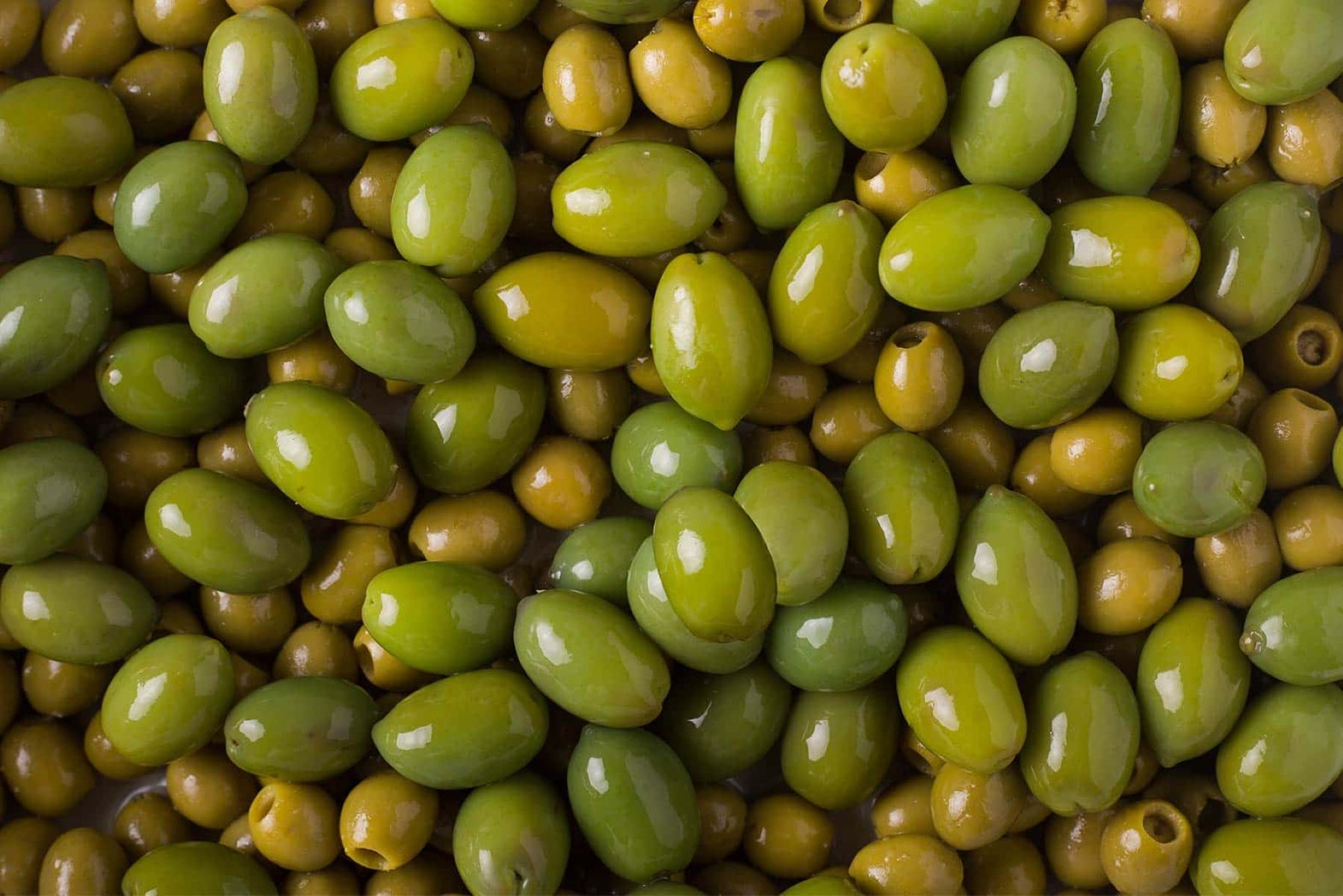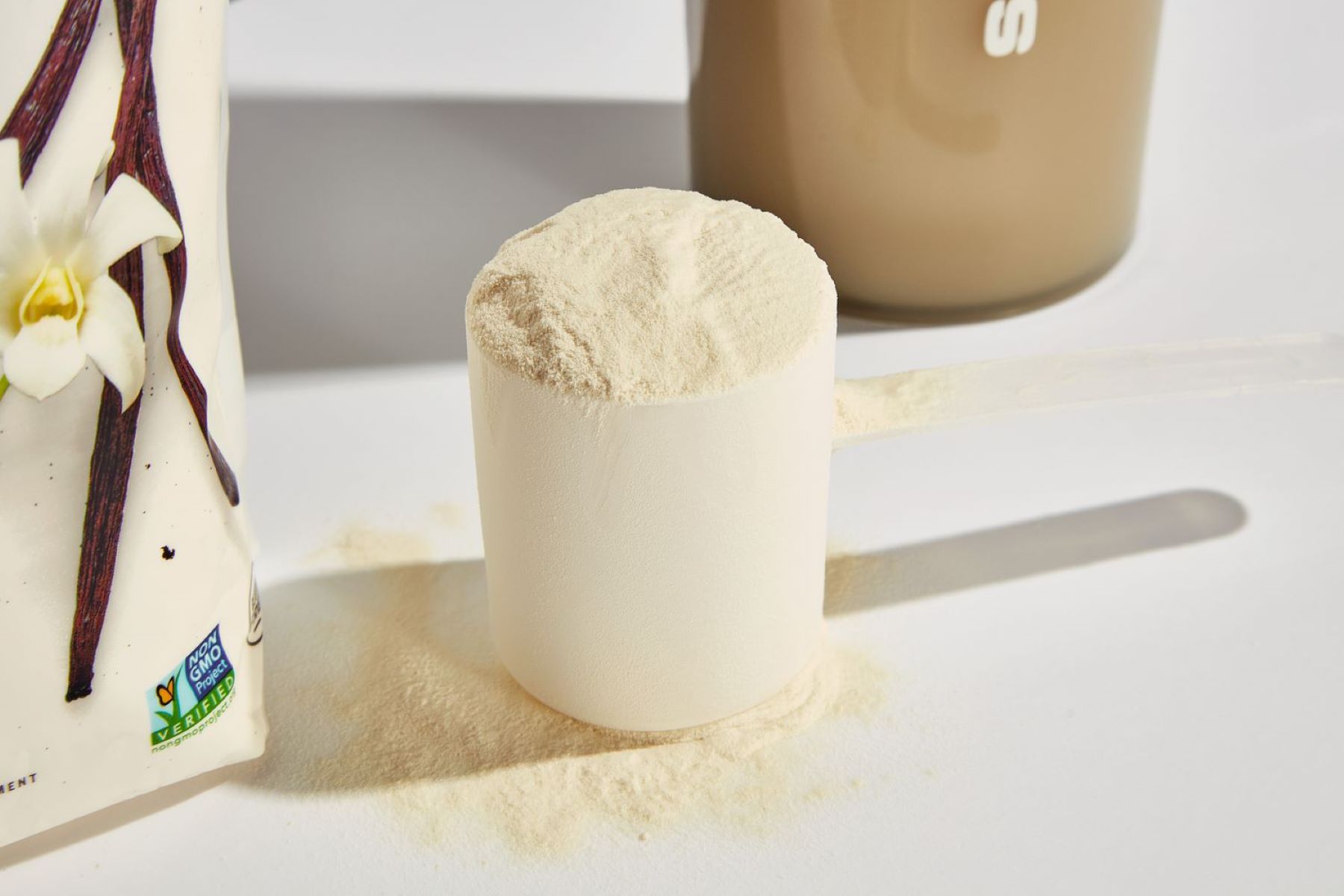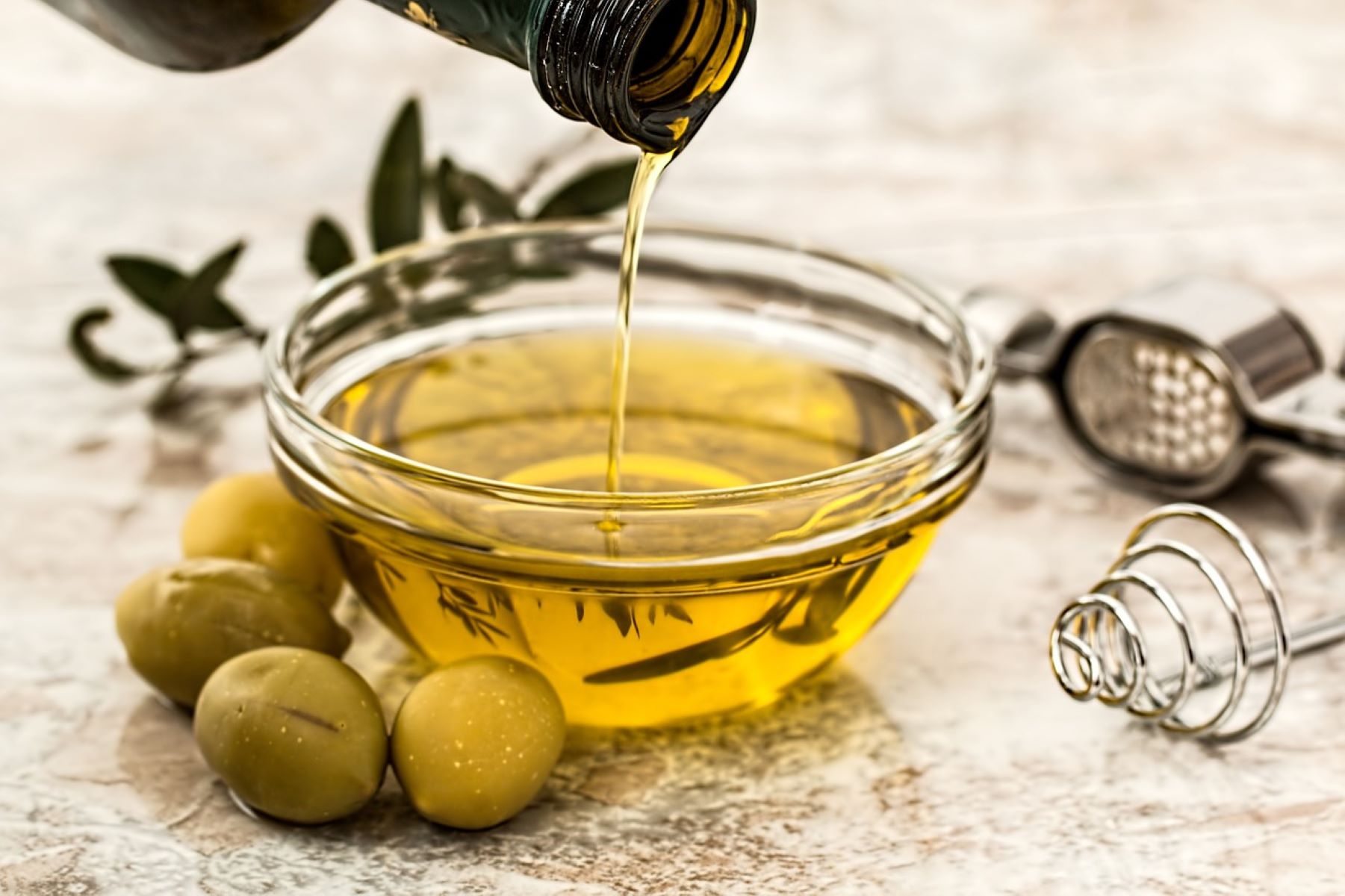Home>Food and Cooking>The Surprising Truth About Pitted Vs. Unpitted Olives


Food and Cooking
The Surprising Truth About Pitted Vs. Unpitted Olives
Published: January 31, 2024
Discover the surprising differences between pitted and unpitted olives in this insightful guide. Learn how these choices can impact your food and cooking.
(Many of the links in this article redirect to a specific reviewed product. Your purchase of these products through affiliate links helps to generate commission for Regretless.com, at no extra cost. Learn more)
Table of Contents
Introduction
Olives have been a staple in Mediterranean cuisine for centuries, revered for their rich flavor and versatile uses. Whether enjoyed as a standalone snack, a zesty addition to salads, or a savory component in pasta dishes, olives are a beloved ingredient that adds depth and character to countless recipes.
One intriguing aspect of olives is the debate between pitted and unpitted varieties. The choice between these two options can significantly impact the culinary experience, from convenience to flavor and nutritional value. In this article, we will delve into the surprising truth about pitted versus unpitted olives, exploring their nutritional value, taste and texture, shelf life, and convenience factors. By understanding the nuances between these two forms of olives, you can make informed decisions when incorporating them into your culinary creations.
The Nutritional Value of Pitted and Unpitted Olives
When it comes to the nutritional value of olives, both pitted and unpitted varieties offer a host of health benefits. Olives are renowned for their high content of monounsaturated fats, which are considered heart-healthy and can help lower the risk of cardiovascular diseases. Additionally, they are a rich source of vitamin E, an antioxidant that supports skin health and immune function.
Pitted olives, as the name suggests, have had their pits removed. This process does not significantly alter their nutritional composition, as the majority of the olive's beneficial nutrients are contained within the flesh. However, it's important to note that pitted olives may undergo processing methods that involve the use of lye or brine, which can affect their sodium content. Therefore, when selecting pitted olives, it's advisable to opt for those that have been prepared using natural fermentation methods to minimize sodium intake.
On the other hand, unpitted olives retain their pits, which can contribute a slightly bitter taste and firm texture. While the pits themselves are not typically consumed, they can influence the overall flavor profile of the olives. Unpitted olives also tend to undergo minimal processing, preserving their natural nutrients and flavors. This makes them an excellent source of dietary fiber, which aids in digestion and promotes a feeling of fullness.
In terms of calorie content, both pitted and unpitted olives are relatively similar. They are considered a calorie-dense food due to their fat content, but when enjoyed in moderation, they can be a valuable addition to a balanced diet. The specific nutrient content of olives, including their vitamin and mineral profiles, may vary based on factors such as the olive variety and cultivation methods.
In summary, whether you opt for pitted or unpitted olives, you can benefit from their rich nutritional composition. These small, flavorful fruits offer a spectrum of essential nutrients and health-promoting compounds, making them a valuable addition to a wholesome diet. Whether you're savoring them as a snack or incorporating them into your culinary creations, olives in both pitted and unpitted forms can contribute to your overall well-being.
The Taste and Texture of Pitted and Unpitted Olives
When it comes to the taste and texture of olives, the choice between pitted and unpitted varieties can significantly influence the overall sensory experience. Pitted olives, having undergone the process of pit removal, often exhibit a softer and more yielding texture. This is attributed to the absence of the pit, which can sometimes impart a slightly fibrous or crunchy element to the fruit. As a result, pitted olives tend to offer a smoother mouthfeel, allowing their rich, briny flavor to take center stage without the distraction of the pit's presence.
Conversely, unpitted olives, with their intact pits, present a more robust and substantial texture. The pits contribute a distinct firmness to the olives, adding a satisfying crunch and depth to each bite. This characteristic texture can be particularly appealing to those who enjoy a more substantial mouthfeel and a hint of bitterness, which is often associated with the presence of the pit. Additionally, the pits can infuse the olives with a subtle earthy undertone, enhancing their overall flavor profile.
In terms of taste, both pitted and unpitted olives boast the signature tangy, briny flavor that has made them a beloved addition to countless culinary creations. Pitted olives, with their softer texture, may allow their flavor to unfold more readily on the palate, offering a smooth and consistent burst of savory goodness. On the other hand, unpitted olives, with their firmer texture, may require a bit more chewing, allowing the taste to gradually intensify and evolve as the olive is enjoyed.
It's important to note that the taste and texture of olives can also be influenced by factors such as their variety, ripeness, and processing methods. For example, green olives, whether pitted or unpitted, are known for their slightly more bitter and tangy flavor profile, while black olives tend to offer a milder, fruitier taste. Additionally, the curing process, which can involve methods such as brining or oil-curing, can impart nuanced flavor nuances and textures to the olives.
Ultimately, the choice between pitted and unpitted olives in terms of taste and texture comes down to personal preference and the specific culinary application. Whether you prefer the smooth, yielding nature of pitted olives or the robust, satisfying texture of unpitted olives, both varieties offer a delightful sensory experience that can elevate a wide range of dishes, from salads and antipasti platters to savory stews and pasta sauces.
The Shelf Life of Pitted and Unpitted Olives
When it comes to the shelf life of olives, both pitted and unpitted varieties possess impressive longevity, making them a convenient and reliable pantry staple. The preservation methods employed in the production of olives play a crucial role in determining their shelf life, ensuring that they can be enjoyed over an extended period without compromising their quality.
Pitted olives, having undergone the removal of their pits, are often subject to preservation techniques such as brining or oil-curing. These methods not only enhance the flavor and texture of the olives but also contribute to their extended shelf life. When stored in an airtight container and kept refrigerated, pitted olives can maintain their quality for an impressive duration, often remaining fresh for several months. However, it's important to note that the specific shelf life of pitted olives can vary based on factors such as the type of brine or oil used in their preservation and the presence of additional flavorings or seasonings.
On the other hand, unpitted olives, with their intact pits, are typically preserved using similar methods, such as brining or oil-curing, to ensure their long-lasting quality. The presence of the pits does not significantly impact the shelf life of unpitted olives, as the preservation techniques employed effectively safeguard their flavor and texture. When stored in suitable conditions, such as a cool, dark pantry or a refrigerated environment, unpitted olives can maintain their freshness for an extended period, often remaining viable for several months.
It's important to emphasize that proper storage is essential for maximizing the shelf life of both pitted and unpitted olives. Storing them in airtight containers, preferably with a layer of brine or oil to maintain moisture and prevent oxidation, can help prolong their freshness. Additionally, keeping olives refrigerated can further extend their shelf life, ensuring that they retain their flavor and texture over time.
When considering the shelf life of olives, it's important to conduct regular checks for signs of spoilage, such as unusual odors, changes in color, or the presence of mold. While olives are known for their resilience and long shelf life, proper storage and periodic inspection are vital for ensuring that they remain safe and enjoyable to consume.
In summary, both pitted and unpitted olives boast impressive shelf lives when stored under suitable conditions. Their resilience and longevity make them a valuable addition to any kitchen, offering a versatile ingredient that can be enjoyed over an extended period without compromising on quality. Whether used in culinary creations or enjoyed as a standalone snack, olives in both pitted and unpitted forms exemplify the remarkable preservation techniques that have made them a cherished component of global cuisine.
The Convenience Factor: Pitted vs. Unpitted Olives
When it comes to the convenience factor, the choice between pitted and unpitted olives can significantly impact the ease of incorporating these flavorful fruits into your culinary endeavors. Pitted olives, having undergone the process of pit removal, offer a level of convenience that is particularly appealing to those seeking a hassle-free culinary experience. The absence of pits in pitted olives eliminates the need for diners to navigate around the pits while savoring these delectable fruits, making them a convenient choice for salads, antipasti platters, and other dishes where effortless consumption is desired.
In contrast, unpitted olives, with their intact pits, present a slightly more involved experience. The presence of pits in unpitted olives requires diners to exercise caution and mindfulness while enjoying these savory treats, as inadvertently biting into a pit can detract from the overall dining experience. However, it's important to note that the presence of pits in unpitted olives can also be viewed as an opportunity for culinary creativity. For those who enjoy experimenting in the kitchen, unpitted olives provide the option to infuse dishes with a rustic, authentic charm, as the pits can impart subtle earthy notes and enhance the visual appeal of various recipes.
In terms of practicality, pitted olives are often favored for their convenience in culinary preparations, as they can be readily incorporated into recipes without the need for additional preparation steps. Whether tossed into a vibrant Mediterranean salad, stirred into a savory olive tapenade, or used as a flavorful pizza topping, pitted olives streamline the cooking process, allowing for effortless integration into a wide array of dishes. This convenience factor can be particularly advantageous for home cooks and professional chefs alike, saving valuable time and effort in the kitchen.
On the other hand, while unpitted olives may require a bit of extra attention during consumption and culinary preparations, they offer a unique appeal that resonates with aficionados of traditional, artisanal culinary practices. The process of removing pits from unpitted olives can serve as an opportunity for culinary exploration, inviting individuals to engage in the art of food preparation and savor the authentic, unadulterated essence of these timeless fruits.
Ultimately, the convenience factor of pitted versus unpitted olives is a matter of personal preference and the specific culinary context in which they are utilized. Whether seeking the ease of ready-to-eat pitted olives or the authenticity and creative potential of unpitted olives, both varieties offer a delightful and versatile addition to the culinary landscape, catering to a diverse range of preferences and culinary aspirations.
Conclusion
In conclusion, the debate between pitted and unpitted olives unveils a fascinating tapestry of culinary nuances, nutritional considerations, and practical implications. Both pitted and unpitted olives offer a spectrum of attributes that cater to diverse preferences and culinary contexts, making them valuable components of global cuisine.
The nutritional value of olives, whether pitted or unpitted, underscores their status as a wholesome and beneficial food. Rich in heart-healthy monounsaturated fats and antioxidant vitamin E, olives in both forms contribute to overall well-being and can be enjoyed as part of a balanced diet. The slight variations in sodium content and dietary fiber between pitted and unpitted olives provide individuals with options that align with their specific nutritional needs and preferences.
When it comes to taste and texture, the choice between pitted and unpitted olives presents a delightful array of sensory experiences. Pitted olives offer a smooth, yielding texture that allows their briny flavor to take center stage, while unpitted olives boast a robust, substantial texture and a hint of bitterness, adding depth to their taste profile. These distinct characteristics cater to diverse palates and culinary applications, offering a wealth of creative possibilities for home cooks and professional chefs alike.
The shelf life of pitted and unpitted olives showcases their remarkable resilience and longevity, making them a dependable pantry staple. Whether stored in brine, oil, or airtight containers, both varieties of olives can maintain their quality for extended periods, ensuring that they remain readily available for culinary endeavors and spontaneous snacking.
In terms of convenience, the choice between pitted and unpitted olives reflects the balance between ease of consumption and the potential for culinary exploration. Pitted olives streamline the cooking process, offering effortless integration into a wide array of dishes, while unpitted olives provide an authentic, rustic charm and an opportunity for creative expression in the kitchen.
Ultimately, the choice between pitted and unpitted olives is a matter of personal preference, culinary context, and the specific nuances that individuals seek to infuse into their dining experiences. Whether relishing the convenience of pitted olives or embracing the authenticity of unpitted olives, both varieties embody the timeless allure of olives, inviting individuals to savor their rich flavors, versatile uses, and cultural significance.














